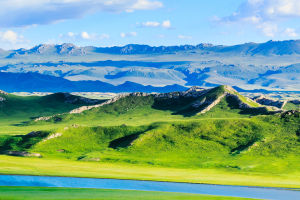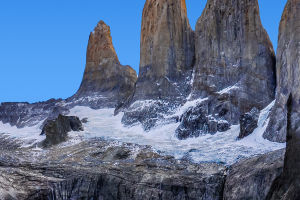Hypersaline water bodies, or bodies of water with very high salt content, play unique and important roles in nature. They are often extreme and inhospitable environments that challenge life, but they also support a variety of specialized organisms adapted to these conditions.
Here are some of the roles and values of hypersaline water bodies:
1. Unique ecosystems: Hypersaline water bodies often support unique ecosystems adapted to extreme conditions. Microorganisms such as halophilic bacteria, algae, and archaea thrive exclusively in these high-saline environments. In turn, they support the food chains of large organisms, such as brine shrimp, which can be found in several hypersaline lakes.
2. Scientific research: Hypersaline water bodies have attracted considerable attention from the scientific community because of their unique and often extreme environments. They provide opportunities to study the limits of life, evolution, and biogeochemical cycles under extreme conditions. They also provide a natural laboratory for testing hypotheses related to astrobiology, climate change, and environmental adaptation.
3. Economic benefits: Some hypersaline water bodies have economic value. For example, the Great Salt Lake in Utah and the Dead Sea in Jordan are sources of mineral salts that are used in a variety of industrial and agricultural applications. In some cases, hypersaline bodies of water also support tourism and recreational activities, such as bird watching and swimming.
4. Environmental significance: Hypersaline water bodies can also play a role in the global carbon and water cycle. They can act as carbon sinks, storing atmospheric carbon dioxide in sedimentary layers. They may also be an important source of evaporation, which contributes to the global water cycle and helps regulate global climate patterns.
Hypersaline water bodies are unique ecosystems that provide various scientific, economic, and environmental benefits. They are also an invaluable resource for studying the limits of life and the effects of environmental change on natural systems.
A hypersaline body of water is a body of water with a high concentration of dissolved salts. Here are the top 10 most salinity bodies of water in the world:
1. Dead Sea: Located near Jordan, the Dead Sea is the saltiest body of water in the world. It has a salinity of about 34% (10 times higher than the ocean) and is so dense that swimmers can easily float on its surface.
2. Lake Assal: Lake Assal is a crater lake in Djibouti, Africa, and the second-largest body of salty water in the world. With a salinity of approximately 34.8 percent, it is one of the lowest points on Earth at more than 500 feet below sea level.
3. Don Juan Pond: Don Juan Pond is a small, shallow, highly saline lake in Antarctica. With a salinity of approximately 44%, it is one of the saltiest bodies of water in the world.
4. Great Salt Lake: Located in Utah, USA, the Great Salt Lake has a salinity of about 12-27%, depending on the time of year.
5. Lake Urmia: Lake Urmia is one of the largest salt lakes in the world. Its salinity levels have been rising in recent years due to climate change and poor water management.
6. Salton Sea: The Salton Sea is a shallow salt lake located in California, USA. Its salinity level has increased over the years due to agricultural runoff and is currently around 44 g/l.
7. Chaka Salt Lake: Chaka Salt Lake is a saltwater lake in China, known for its breathtaking beauty and unique landscape. With a salinity of around 32%, it is one of the saltiest lakes in the world.
8. Lake Eyre: Lake Eyre is a salt lake located in Australia and is one of the largest lakes in the country. Its salinity level varies widely depending on the time of year and rainfall but can be as high as 30%.
9. Kara-Bogaz-Gol: Kara-Bogaz-Gol is a salt lake located in Turkmenistan and is the fourth largest lake in the world. Its salinity level is around 35%.
10 Lake Natron: Lake Natron is a salt lake located in Tanzania, famous for its bright red color. With a salinity of around 40%, it is one of the saltiest lakes in the world.
These hypersaline bodies of water are unique ecosystems, often home to specialized organisms adapted to harsh conditions. However, their high salt concentration can also pose challenges to human activities such as agriculture and drinking water supply.


